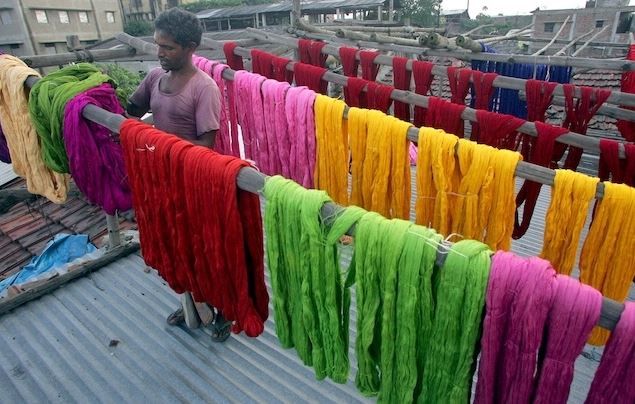An interactive map, a long accurate job, an extra key to understand the state of health, physical and civil, of the world we live in. We could thus summarize the outcome of the complex work that led hands off to present the environmental justice index, – Environmental Global Index, Made with the contribution of the Cariplo Foundation and in collaboration with the University of Milan, Polytechnic of Milan and Enextgen.
The model is similar to that of the worldwide freedom index (World Press Freedom Index) of Reporter Sans Frontières. On the map, as in other interactive maps, which can be moved over time to see the trend in recent years, brilliant green indicates the most virtuous countries, the red those at the bottom of the ranking. In the middle a staircase that turns from light green to reddish brown shows intermediate gradations.
Environmental justice and climatic justice, what is the difference
Environmental justice is a complex concept that does not end in the attention of a country to the environment but calls into question other factors: from human rights, to social inequality, because it does not only deal with the environment but of man-environment interaction and their mutual well-being.
The first report published simultaneously with the launch of the Edexand relating to the textile sector, among those that have greater repercussions both on the ecological and social level their environmental impact and for the fact that they are often associated with precarious working conditions and exploitation practices, reconstructing the history of the theme, thus defines environmental justice: “It focuses on the reduction of inequalities deriving from the inequal access to natural resources, from the unfair distribution of environmental damage and the involvement of vulnerable communities in decisions concerning the management of the environment”.
Distinguishes it from climatic justicewhich in part intersects it, and that instead: “focuses on the impacts of climate change, placing the emphasis on historical responsibility, on inequalities in the emission of greenhouse gases and on the different adaptation skills between developed countries and the Global South”.
“The first reflection that guided the work”, reads the section of the relationship that describes the construction of the index, “was that of redefine the concept of environmental justice through two fundamental principles: responsibility (who does) and damage (who suffers). These two principles have always been analyzed in the perspective country, that is, considering how each nation contributes to global environmental problems and, at the same time, as the consequences undergoes. This duality has made it possible to build a more balanced index, capable of capturing not only the environmental impact of a country, but also its vulnerability to climate change and ecological disasters. In particular, the approach was structured around two fundamental perspectives, which have become the starting point of the construction of the index “
The double perspective of the index
The “What is done” «Measure the contribution of a country to the increase in negative externalities on the size of environmental justice, trying to quantify the impact it has on the system. Here have been considered factors such as greenhouse gas emissions, waste management, the use of fossil resources and associated policies ». THEthe “what is suffered” «Evaluate the vulnerability and exposure of a country to environmental and climatic damage, trying to quantify the impact it suffers. Indicators such as the number of species at risk, the damage from climatic disasters, and the unresolved events of environmental injustice were analyzed ». These two perspectives, explains the report, “have been further articulated in three key dimensions, which reflect not only the environmental aspects, but also the social and economic ones related to environmental justice”.
What are the parameters considered
In the dimensions assessed, the priorities of hands aimed is recognized: sustainability, human rights and common goods. “Sustainability ““Evaluates the actions of a country in terms of reducing emissions, waste management and investments in renewable energy and fossil sources”. In the “human rights “” Indicators such as air quality, protected forests and access to education have been included. The goal is to evaluate how the responsibilities and environmental damage impacts the quality of life and the fundamental rights of people “. While the component”common goods ” «It focuses on the loss of biodiversity, climatic impacts and environmental conflicts. This dimension allows you to analyze how the environment, understood as a common good, is threatened by human activities and climate change “.
Environment, people, rights, economics: interdependent factors
How much all these factors are interdependent can be seen by consulting the interactive map: it is no coincidence that brilliant green is a constant only in western Europe, Canada and French Guinea, the parts of the world which, with all their difficulties still, better than other realities, combine economic development, democratic institutions, welfare state, civil rights.








